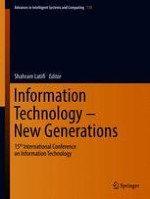2018 | OriginalPaper | Buchkapitel
68. Increasing the Prediction Quality of Software Defective Modules with Automatic Feature Engineering
verfasst von : Alexandre Moreira Nascimento, Vinícius Veloso de Melo, Luiz Alberto Vieira Dias, Adilson Marques da Cunha
Erschienen in: Information Technology - New Generations
Aktivieren Sie unsere intelligente Suche, um passende Fachinhalte oder Patente zu finden.
Wählen Sie Textabschnitte aus um mit Künstlicher Intelligenz passenden Patente zu finden. powered by
Markieren Sie Textabschnitte, um KI-gestützt weitere passende Inhalte zu finden. powered by
